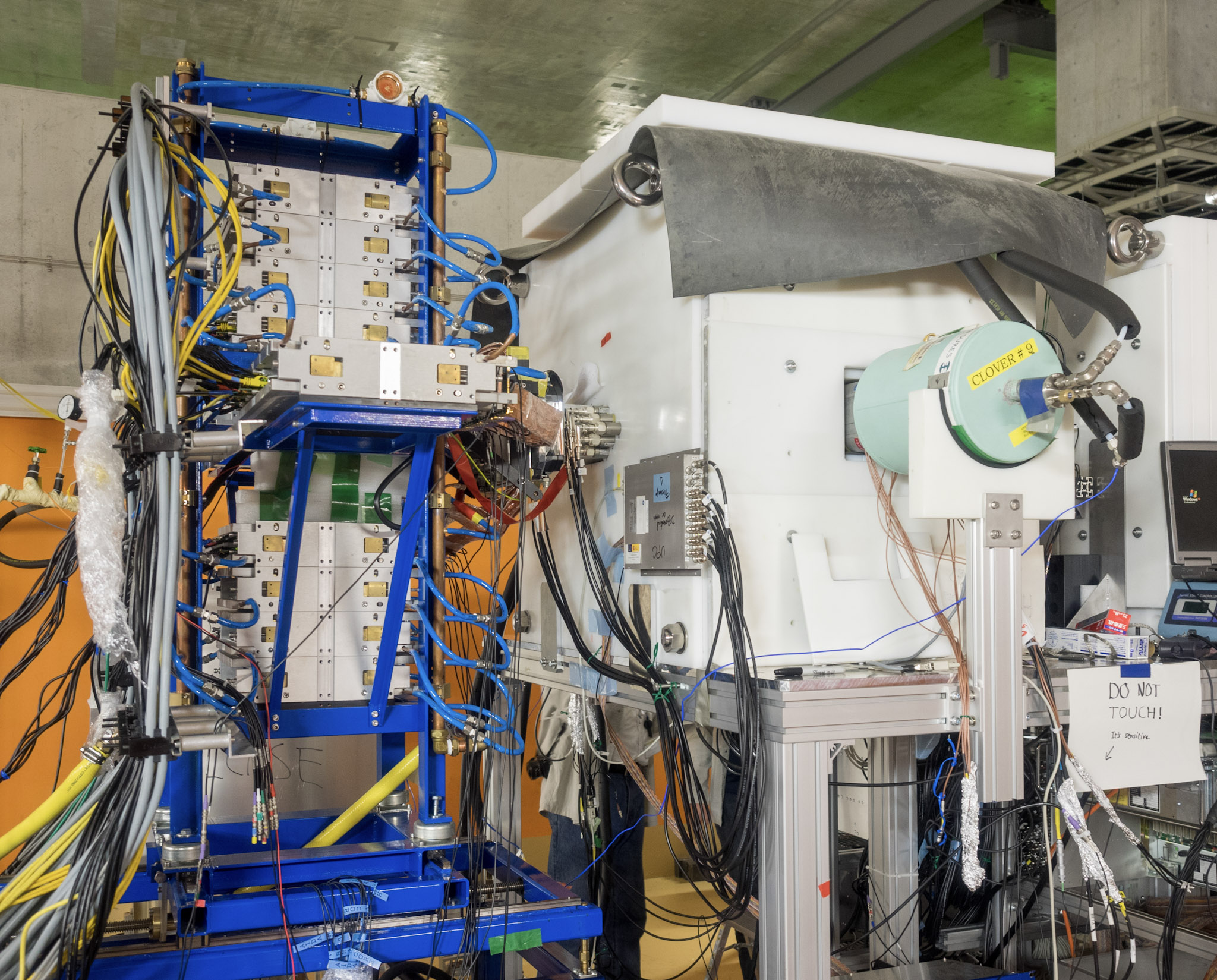Outside of TRIUMF the Exotic Decay Spectroscopy Group has helped to build and operate two detection setups.
One of out detection setups is a neutron detector to measure beta-delayed neutrons. These are neutrons that are emitted after a beta-decay, and this decay mode occurs only for very neutron-rich nuclei. These measurements provide a new window into our stardust origins by making the first-ever decay measurements of many of the rare neutron-rich isotopes central to heavy element formation in stars.
The BELEN detector has been operated at GSI Darmstadt in 2010/11, before a measurement campaign was done in Finland at the IGISOL facility. In 2016 we have merged the setup with other neutron detectors and two HPGe clovers to form the BRIKEN (Beta-delayed Neutron Measurements at RIKEN) collaboration at RIKEN Nishina Center in Japan. The BRIKEN collaboration involves about 70 scientists and engineers from Japan, Canada, Spain, the United States, the United Kingdom, Hungary, Poland, Hong Kong, South Korea, and Vietnam.
The BRIKEN detector was the world’s most efficient neutron detector for astro- and nuclear physics. From 2016-2021, the collaboration investigated ~300 neutron-rich nuclides, measuring the neutron emission probabilities and half-lives for the many of them for the first time.

At the storage ring facilities at GSI Darmstadt and FAIR, a new generation of multi-purpose particle detectors for the detection of decay products outside of the ring acceptance have been developed. This research is done within the ILIMA project Isomeric beam, LIfetimes and MAsses. The prototype, called CsISiPHOS (CsI–Silicon Particle detector for Heavy ions Orbiting in Storage rings) and its younger brother PLEIADES (ParticLE sIlicon-scintillAtor DEtector for Storage rings) have been commissioned at the Experimental Storage Ring (ESR) in 2022. Two accepted proposals will make use of them in 2025/26.

